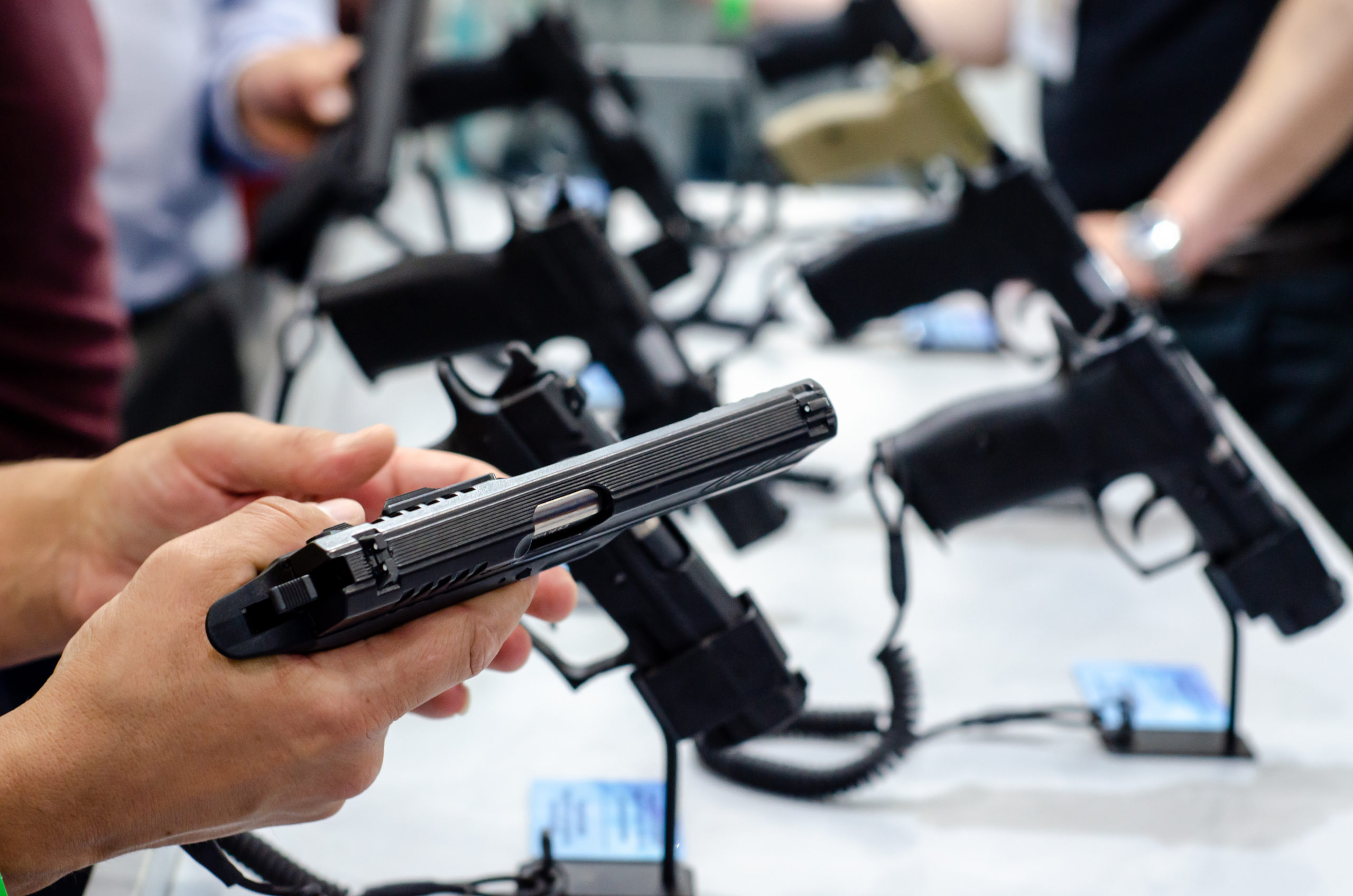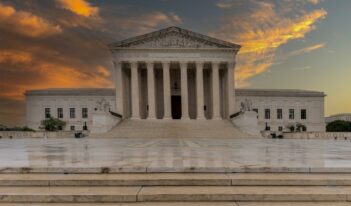
The Supreme Court applies a contested history of firearms regulation to evaluate the constitutionality of firearms restrictions.
The U.S. Supreme Court’s decision in New York State Rifle & Pistol Association v. Bruen puts the Court firmly in charge of U.S. firearms policy. The decision also marks the beginning of a new era in which constitutional litigation will replace state and federal legislation as the primary means of resolving deep and enduring disagreements over how to regulate guns.
The Court’s Bruen decision contrasts with its decision in Dobbs v. Jackson Women’s Health Organization, overruling Roe v. Wade, where it declared that “the authority to regulate abortion is returned to the people and their elected representatives.” The Bruen decision greatly expands the authority of federal courts to overturn gun control legislation.
Moreover, Bruen establishes a radically new methodology for determining the scope of the Second Amendment right to keep and bear arms. This methodology rejects consideration of modern public safety concerns; instead, it requires an exclusively historical analysis in assessing the constitutionality of restrictions on the right to own and carry a gun.
At issue in the Bruen case was the constitutionality of a 1913 New York state law requiring applicants for a concealed carry permit to establish “a special need for self-protection distinguishable from that of the general community.” This type of law is known as a “may-issue” carry restriction because it gives state officials discretion in deciding whether to issue a permit based on a judgment about need or suitability. By contrast, “shall-issue” carry restrictions require state officials to issue a permit so long as an applicant satisfies specific objective criteria, such as undergoing fingerprinting, a mental health records check, or training in firearms handling.
The Court held that the Second Amendment permits only firearms laws that are consistent with how the right was originally understood at the time it was adopted in 1791, as discerned by examination of “this Nation’s historical tradition of firearms regulation.” After surveying this history, the Court concluded that, “apart from a handful of late 19th century jurisdictions, the historical record” at issue in the case “does not demonstrate a tradition of broadly prohibiting the public carry of commonly used firearms for self-defense” nor “any such historical tradition limiting public carry only to those law-abiding citizens who demonstrate a special need for self-defense.”
The Court also held that the constitutionality of firearms restrictions of any type depends on whether they are analogous to regulations in the 18th and 19th centuries that reflect the original meaning of the amendment. The Court offered two metrics for judging whether modern restrictions are sufficiently analogous to historical regulations: “whether modern and historical regulations impose a comparable burden on the right of armed self-defense,” and “whether that burden is comparably justified.” In a footnote, the Court refused to rule out constitutional challenges to shall-issue carry restrictions, especially those that impose lengthy wait times or substantial fees. Whether other regulations—such as large-capacity magazine bans, universal background checks, and red flag laws—will pass constitutional muster remains to be seen.
Beyond its impacts on gun control legislation, Bruen also has implications for another front in the battle over gun control: civil litigation against the firearms industry.
In 2005, Congress passed a law intended to end a barrage of civil claims brought by shooting victims, their families, and municipalities aiming to hold the gun industry liable for the personal and public costs of firearms-related violence. This law, the Protection of Lawful Commerce in Arms Act (PLCAA, pronounced “placa”), immunizes gun manufacturers, distributors, and retail sellers from lawsuits arising out of injuries caused by the criminal misuse of a firearm.
Although PLCAA has greatly reduced the volume of such lawsuits, plaintiffs have continued to pursue civil claims against industry gun defendants based on PLCAA’s various exceptions to immunity. Most notably, PLCAA does not extend immunity to a gun manufacturer or seller who “knowingly violated a state or federal statute applicable to the sale or marketing of” a firearm. This exception to PLCAA immunity is known as the “predicate exception” because it rests on a defendant’s violation of an underlying, or “predicate,” statute. This limitation on the scope of industry immunity reflects Congress’s explicit intent in passing PLCAA to recognize different states’ approaches to firearms regulation and to subject gun-industry defendants to civil liability for violating state firearms restrictions.
Last year, the state of New York passed a law that deems it a public nuisance to sell firearms without taking specified measures to reduce the risk of illegal diversion of weapons into the black market. Shooting victims have argued that this type of law qualifies as a predicate statute that would subject companies to civil liability for failure to monitor their distribution chains. Industry defendants contend that this type of state statute is preempted by the PLCAA because recognizing it as a predicate statute would subvert Congress’s grant of immunity to the gun industry.
Until Bruen, it seemed likely that this kind of argument, as well as other lawsuits raising complex questions about how to interpret PLCAA and its exceptions, would be decided based on principles of statutory interpretation. Congress, state legislatures, and the Court would thus all have a role in determining the scope of gun industry immunity from civil lawsuits, with Congress and state legislatures providing a statutory framework, and the Court interpreting and applying it.
The Bruen decision, however, threatens to constitutionalize the question of gun industry immunity—sweeping aside the mixed federal-state statutory scheme constructed by Congress and replacing it with the Supreme Court’s own contested views about the history of firearms regulation.
As the majority in Bruen held, “when the Second Amendment’s plain text covers an individual’s conduct, the Constitution presumptively protects that conduct.” Insofar as state statutes regulating the gun industry have implications for the availability of firearms for those wishing to exercise their rights to keep and bear them, then under Bruen such statutes are presumptively unconstitutional. Whether that presumption can be overcome will depend upon whether a court concludes that a statute has a sufficient historical analogue. If the answer to that question is “no,” then the statute may be deemed unconstitutional. In that case, any civil lawsuit based on a violation of the statute would be dismissed.
The idea that Bruen precludes lawsuits predicated on the violation of unconstitutional statutes seems unremarkable. But Bruen may go even further by forbidding lawsuits against the gun industry that are brought pursuant to laws that are themselves constitutional. That is, a law may be deemed a constitutional way to regulate the gun industry because it has a sufficient historical analogue, but bringing a civil lawsuit based on this law may be unconstitutional if there is no historically analogous use of lawsuits against the firearms industry. If that is the case, Bruen may have erected an immunity shield for the firearms industry that is far more extensive than the one that Congress constructed in PLCAA.
Judicial conservatives have argued for decades that highly polarized disagreements about public policy should be resolved through legislative deliberation, not by unelected judges. They have denounced “regulation through litigation” as an end-run around the legislative process. In light of these conservative principles, it is perhaps surprising that the conservative majority of the Supreme Court, when it comes to firearms regulation, has replaced legislative deliberation in Congress and statehouses with constitutional litigation to be resolved by unelected judges on the basis of highly contestable historical analysis.
This essay is part of a ten-part series entitled The Supreme Court’s 2021-2022 Regulatory Term.





